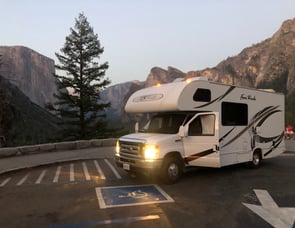Yosemite National Park
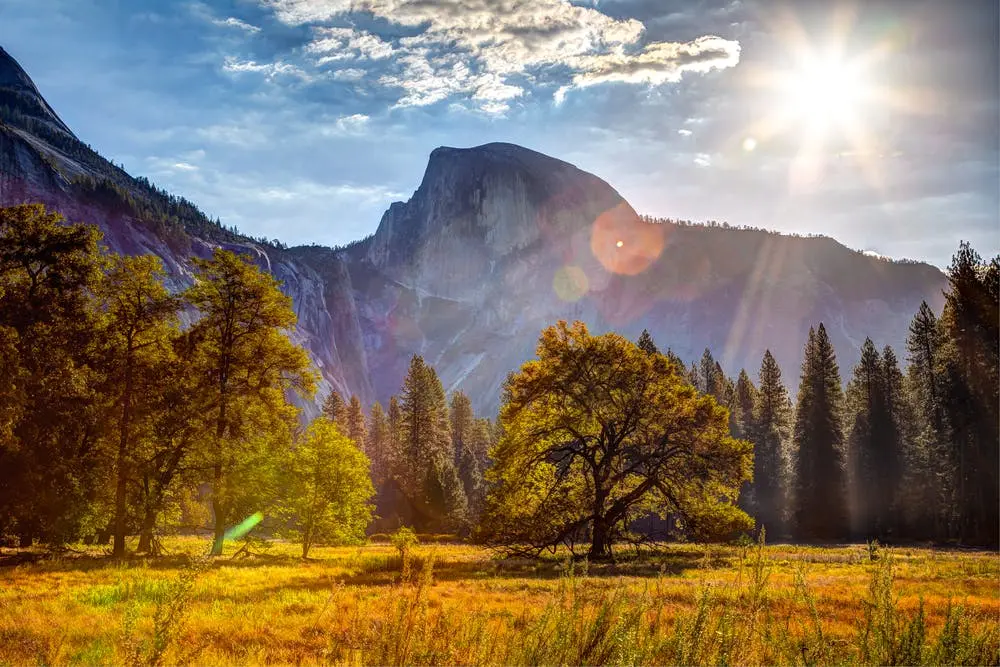
WIDE-RANGING INVENTORY
From affordable pop-ups to luxury motorhomesLARGEST RV RENTAL MARKETPLACE
Thousands of 5 star reviews from happy customersSECURE AND MOST TRUSTED
24/7 Emergency roadside assistance on every booking- Home
- National Parks
- Yosemite National Park
RVing to Yosemite gives you the opportunity to check out Yosemite Falls and other waterfalls, the famous El Capitan and Half Dome cliffs, and beautiful meadows and overlooks. While Yosemite is beautiful any time of the year, it's much more accessible in the late spring, summer, and early fall. That's because snowy weather can sometimes bring travel to a halt in the colder months. You can look for RV rentals near Yosemite in nearby Fresno, Modesto, or Merced, or you could rent one in the Bay Area if you'd like to visit San Jose, Oakland, or San Francisco first. In this RV guide to Yosemite, it's important to point out that you'll need a reservation to drive into the park from mid-April to late October. In the spring and early summer, as well as in the late summer and early fall, you'll need a reservation on weekends and holidays. During the peak of the summer, daily reservations are required for park entry between 5:00 a.m. and 4:00 p.m. Also note that many roads, including Tioga Road and Mariposa Grove Road, are often closed during the winter and part of the spring. Before your trip, check road conditions. Even if roads are open during the winter, you may be asked to put on tire chains to improve traction. You can check with the California Department of Transportation to see what the requirements are during your visit. While most roads within the park are suitable for RVs, there are some exceptions. Glacier Point Road has a maximum vehicle length of 30 feet, Mariposa Grove Road has a maximum vehicle length of 25 feet, and Hetch Hetchy Road has a maximum vehicle length of 25 feet and a maximum vehicle width of 8 feet. During the busy season, try to snag RV parking in Yosemite early as spots may fill up by late morning. RV parking is available at Curry Village, Yosemite Falls, Yosemite Village, and Yosemite Valley Lodge, and the park runs a shuttle service that makes frequent stops throughout the park. You could also think about parking your RV outside of Yosemite's borders and taking the YARTS shuttle into the park. While there are five entrances to Yosemite, the most popular ones are the Big Oak Flat Entrance, the Arch Rock Entrance, and the South Entrance.
- Spring 35-65 F
- Summer 70-80 F
- Fall 40-70 F
- Winter 40-50 F
- Coming soon
- Yosemite National Park Private Vehicle: $35
RV Rentals Near Yosemite National Park
Nearby RV Rentals
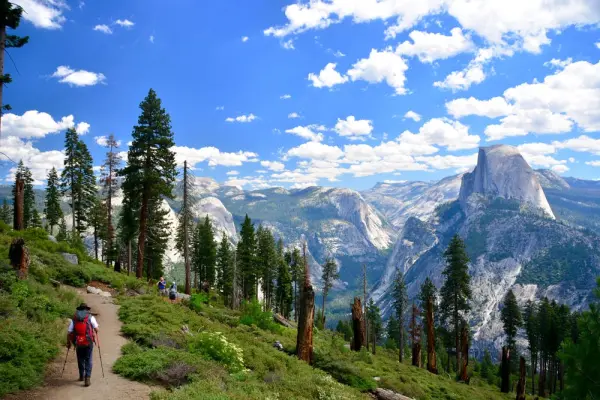
Yosemite National Park Hiking Trails
After taking an RV to Yosemite, make your way by foot to explore some of the best that the park has to offer. Popular trails in Yosemite Valley include Lower Yosemite Falls Trail, Vernal and Nevada Falls Trails, and the strenuous Half Dome Trail. You could also explore the sequoias around the Mariposa Grove Trail or head into a more remote area and hike around Elizabeth or Cathedral lakes in Tuolumne Meadows.
Yosemite Valley Trails
Wawona/Mariposa Grove Hikes
Tuolumne Meadows Trails
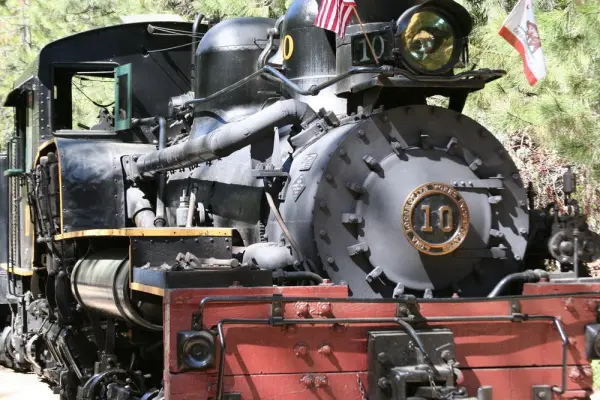
Things to do Outside Yosemite National Park
Outside of Yosemite, you'll find many towns with a Western feel, such as Oakhurst and Sonora. Visit one of their general stores or family-friendly restaurants, or consider booking a fun excursion like horseback riding. Hop on board the Yosemite Mountain Sugar Pine Railroad, located about 10 minutes away from Yosemite's South Entrance. Aside from the train ride, this site offers gold panning, a toy store, and a logging museum.
Discover Nearby Towns and Cities
RV Resorts & Campsites near Yosemite National Park
There are 10 campgrounds within the park that welcome RVs. From April to October, reservations are required. You can reserve a campsite at some campgrounds five months in advance while you can book a site at other campgrounds two weeks or one week in advance. Reservations open at 7:00 a.m. and can fill up within minutes, and each night of camping in Yosemite typically costs $36. If you'd like, you can look for RV campgrounds near Yosemite.
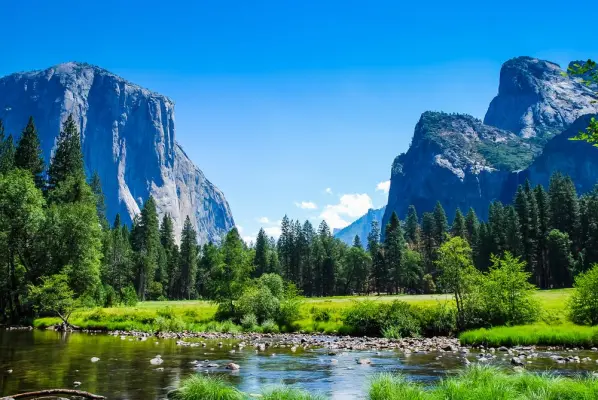
Campgrounds Near Yosemite National Park
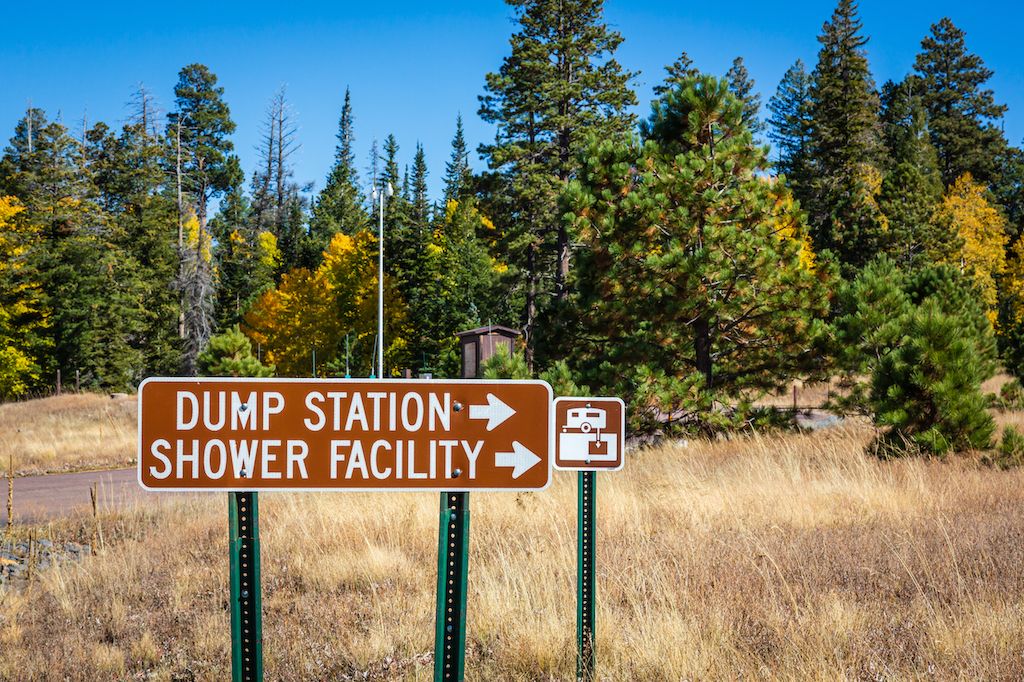
Find the Best Dumpstations Near Yosemite National Park
Dumpstations Near Yosemite National Park
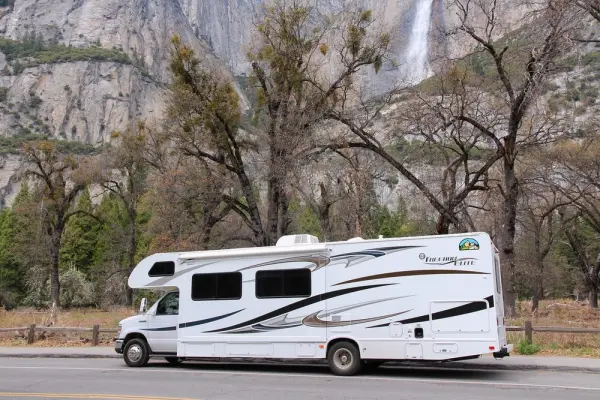
How to get to Yosemite National Park
Driving to Yosemite is fairly straightforward when the weather is nice. Fresno is the closest city to Yosemite and has an airport (Fresno Yosemite International Airport) that connects to major cities in the west, so it can be a convenient place to rent an RV. From Fresno, head north on Highway 41 for about 60 miles until you come to the South Entrance of Yosemite. The Mariposa Grove of Giant Sequoias is located very close to this entrance, and the road to the grove accommodates RVs less than 25 feet long. If you're going to Yosemite from Modesto, Sacramento, or anywhere in the Bay Area, you'll use the Big Oak Flat Entrance. To get there, take Highway 120. The entrance is about 85 miles east of Modesto. Points of interest near the Big Oak Flat Entrance include the Crane Flat Lookout and Tuolumne Grove.

Frequently Asked Questions
Yosemite offers hundreds of hiking trails and scenic views of Half Dome, El Capitan, Yosemite Falls, and more. Many people enjoy riding bikes, fishing, and rock climbing, too.
Yes, and note that reservations fill up very quickly.
Leashed pets are allowed on fully paved roads and in campgrounds. However, they are not allowed in wilderness areas, in public buildings, on buses, or on trails (except the Wawona Meadow Loop).
In May and September, you'll likely have pleasant weather and smaller crowds. In May, many flowers will be blooming.
Related
Top RV Dump Stations In California BLM Camping In Horton Creek RV Rentals Near Yosemite RV Resort RV Rentals Near Bass Lake RV Resort RV Rentals Near Lakes RV & Golf Resort BLM Camping In Equestrian Campground Top RV Dump Stations In Death Valley, California BLM Camping In Mccabe Flat Campground RV Rentals Near Circle CG Farm Campground BLM Camping In Crowley Lake Campground BLM Camping In Horton Creek Campground RV Rentals Near Turlock Lake State Recreation Area RV Rentals Near Crowley Lake RV Park BLM Camping In California Coastal National Monument RV Rentals Near Navy Getaways Point Mugu Beach Hotel & RV Park
